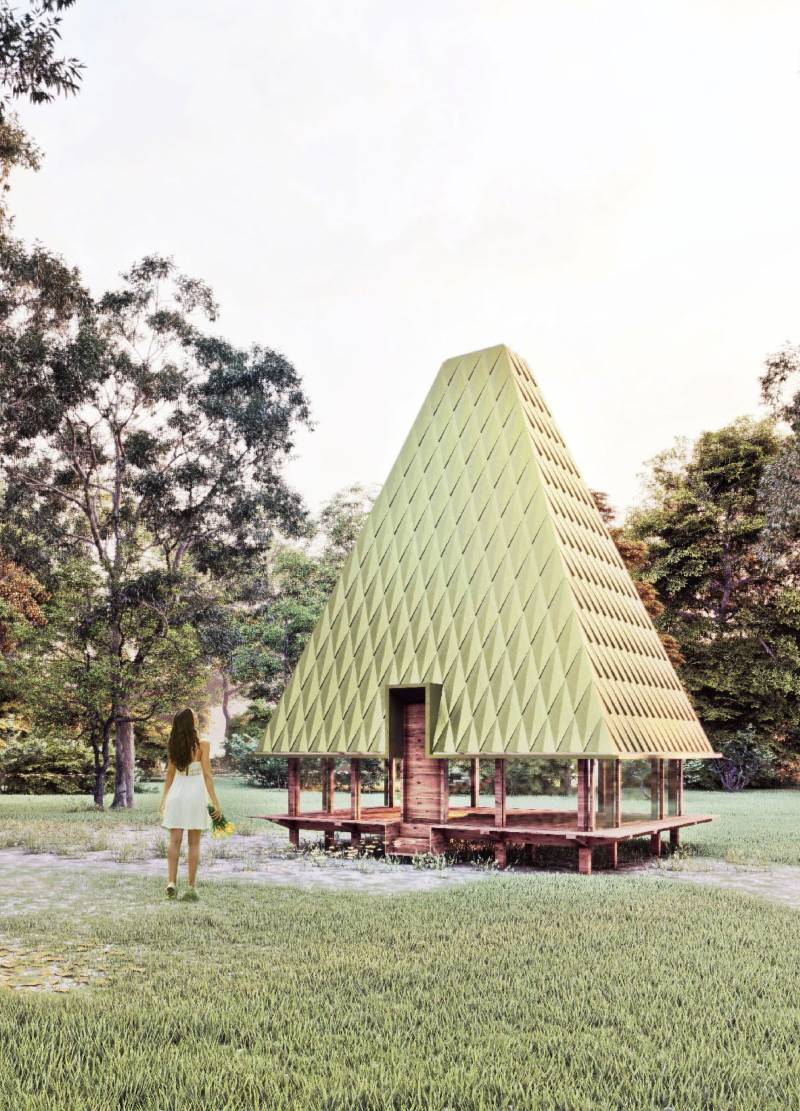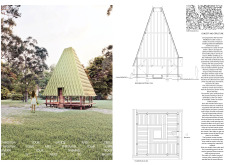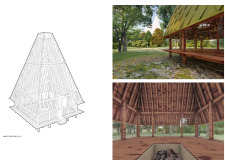5 key facts about this project
Functionally, the Tiny Kiwi Meditation Cabin serves as a dedicated space for meditation practice. Its design allows for an immersive experience with nature, enhancing the meditative practices by aligning the interior atmosphere with the external environment. The cabin's carefully considered layout and spatial organization facilitate both individual and group activities, making it an adaptable space for various forms of contemplation and connection.
The architectural design features a distinctive pyramid shape, a decision that not only captures attention but also optimally directs energy and light into the interior. This shape fosters a sense of ascending space, symbolizing a journey of inner exploration which mirrors the meditation process. Large glass panels form a significant aspect of the design, allowing natural light to flood the interior while offering unobstructed views of the surrounding landscape. This blurring of boundaries between indoor and outdoor spaces is critical for reinforcing the relationship between the occupants and nature, encouraging users to absorb the calming elements of their environment.
In terms of materiality, the Tiny Kiwi Meditation Cabin utilizes locally sourced wood as the primary structural and aesthetic component. This choice not only ensures structural integrity but also reinforces a connection to the local context and ecological sustainability. The use of eco-friendly materials, such as composite panels on the exterior, further emphasizes this commitment to minimizing the ecological footprint while still maintaining a cohesive aesthetic with the site. The rugged texture and earthy tones of these materials promote a sense of belonging, tying the building visually and emotionally to its surroundings.
A notable feature within the cabin is a central fire pit, serving as both a focal point and a functional element for communal gatherings. Surrounding benches crafted from the same wood continue the theme of natural materials while providing comfortable seating for groups engaging in discussions or meditation sessions. The interaction of these various elements illustrates the project’s intent to create not just a space for meditation, but an environment that fosters community and togetherness.
The Tiny Kiwi Meditation Cabin employs unique design approaches that prioritize simplicity and functionality without sacrificing aesthetic appeal. The project exemplifies the principles of minimalist architecture by stripping away unnecessary distractions, allowing users to focus on their practices. The use of open layout encourages fluid movement and adaptability within the space, accommodating a wide range of activities from solitary meditation to group workshops.
Moreover, the cabin's elevated wooden platform is a thoughtful addition that promotes ventilation and moisture control, further exemplifying an understanding of climatic responses within architectural design. Such details reflect a holistic approach to design, where every decision is made with the occupant's experience and environmental context in mind.
In summary, the Tiny Kiwi Meditation Cabin stands as an example of how architecture can enhance personal and communal experiences through thoughtful design. Its combination of innovative shapes, sustainable materials, and an intimate connection to nature creates an inviting atmosphere conducive to reflection and mindfulness. To delve deeper into the architectural plans and sections of this unique project, readers are encouraged to explore the presentation further for comprehensive insights into its design and planning elements.
























